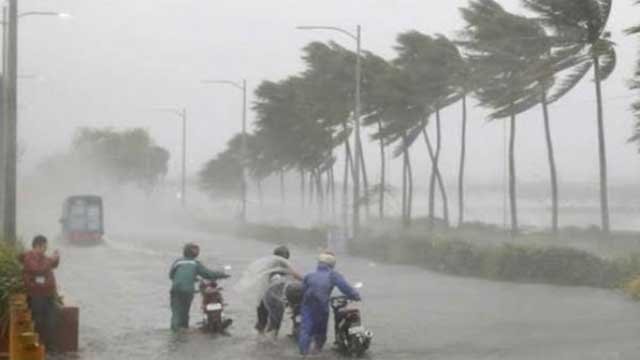Chest-high waters surged down the streets of India's southern city Chennai on Tuesday with eight people killed in intense floods as Cyclone Michaung was set to make landfall on the southeast coast.
The cyclone was forecast to hit the coast of Andhra Pradesh state around midday Tuesday (0630 GMT) as a "severe cyclonic storm", packing winds up to 100 kilometres (62 miles) per hour, the Indian Meteorological Department (IMD) said.
In Chennai, cars were seen floating on raging torrents, homes were flooded, and a crocodile was spotted swimming the streets in the city.
IMD warned of "exceptionally heavy rainfall" in some areas.
"We are facing the worst storm in recent memory," Tamil Nadu state chief minister M.K. Stalin said, in a statement late Monday.
Police said on Tuesday that eight people have been killed in state capital Chennai.
They include some who drowned, as well as one person hit by a falling tree, another electrocuted with live wires in the water, and one crushed by a falling wall.
Trees were uprooted and vehicles swept away due to the heavy rains, according to images posted on social media.
The cyclone is expected to hit India's southeast coast near the town of Bapatla, on the 300-kilometre (185-mile) stretch between Nellore and Machilipatnam.
Sea surges of waves up to 1.5 metres (nearly five feet) above normal tide levels are expected when the cyclone makes landfall, IMD said.
Home Minister Amit Shah said the government was "braced to provide all the necessary assistance to Andhra Pradesh", with rescue teams deployed and more "on standby to mobilise as needed".
The cyclone is expected to reduce in power late in the evening on Tuesday.
Scientists have warned that storms are becoming more powerful as the world gets warmer with climate change.
Cyclones -- the equivalent of hurricanes in the North Atlantic or typhoons in the Northwest Pacific -- are a regular and deadly menace on coasts in the northern Indian Ocean, where tens of millions of people live.





